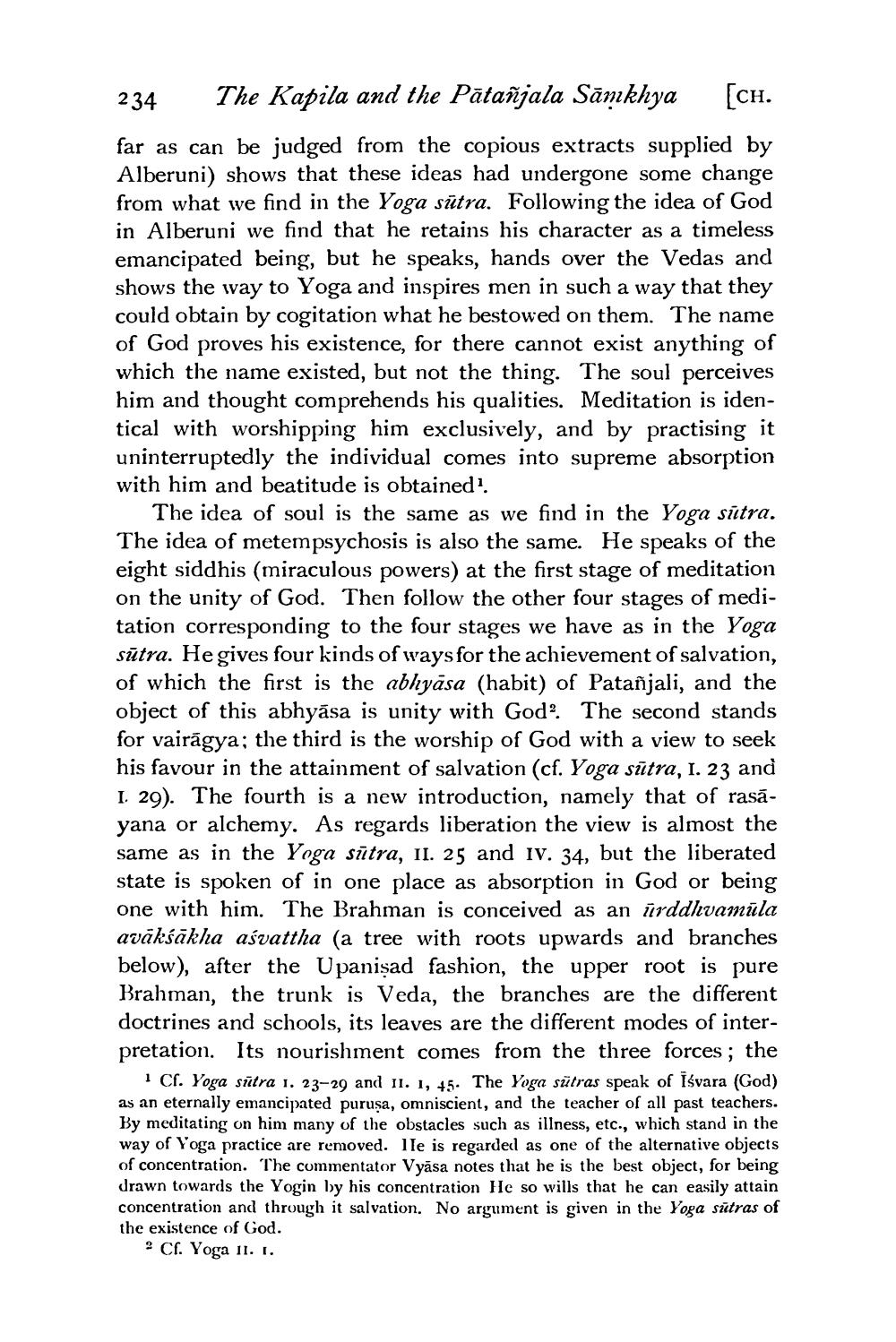________________
234
The Kapila and the Pātañjala Sāmkhya
[CH.
far as can be judged from the copious extracts supplied by Alberuni) shows that these ideas had undergone some change from what we find in the Yoga sūtra. Following the idea of God in Alberuni we find that he retains his character as a timeless emancipated being, but he speaks, hands over the Vedas and shows the way to Yoga and inspires men in such a way that they could obtain by cogitation what he bestowed on them. The name of God proves his existence, for there cannot exist anything of which the name existed, but not the thing. The soul perceives him and thought comprehends his qualities. Meditation is identical with worshipping him exclusively, and by practising it uninterruptedly the individual comes into supreme absorption with him and beatitude is obtained".
The idea of soul is the same as we find in the Yoga sutra. The idea of metempsychosis is also the same. He speaks of the eight siddhis (miraculous powers) at the first stage of meditation on the unity of God. Then follow the other four stages of meditation corresponding to the four stages we have as in the Yoga sūtra. He gives four kinds of ways for the achievement of salvation, of which the first is the abhyāsa (habit) of Patañjali, and the object of this abhyása is unity with God? The second stands for vairāgya; the third is the worship of God with a view to seek his favour in the attainment of salvation (cf. Yoga sūtra, I. 23 and I. 29). The fourth is a new introduction, namely that of rasăyana or alchemy. As regards liberation the view is almost the same as in the Yoga shtra, II. 25 and iv. 34, but the liberated state is spoken of in one place as absorption in God or being one with him. The Brahman is conceived as an urddhvamūla avākšākha aśvattha (a tree with roots upwards and branches below), after the Upanişad fashion, the upper root is pure Brahman, the trunk is Veda, the branches are the different doctrines and schools, its leaves are the different modes of interpretation. Its nourishment comes from the three forces; the
Cf. Yoga sūtra 1. 23-29 and 11. 1, 45. The Yoga sütras speak of Iśvara (God) as an eternally emancipated purusa, omniscient, and the teacher of all past teachers. By meditating on him many of the obstacles such as illness, etc., which stand in the way of Yoga practice are removed. lle is regarded as one of the alternative objects of concentration. The commentator Vyasa notes that he is the best object, for being drawn towards the Yogin by his concentration He so wills that he can easily attain concentration and through it salvation. No argument is given in the Yoga sätras of the existence of God.
2 Cf. Yoga 11. I.




